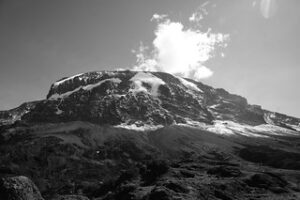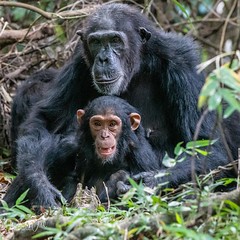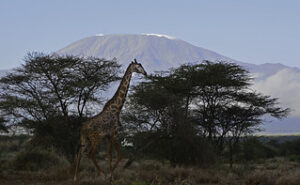Tanzania is a country in East Africa with true natural beauty and biodiversity. It is made of various unique safari destinations in Africa and the world in general, these iconic destinations include but not limited to Serengeti National Park, Ngorongoro Crater, Tarangire National Park, Mountain Kilimanjaro (the tallest mountain in the world) and Kilimanjaro National Park. The country is the destination of tourists throughout the year with each months offers a unique experience. The factors facilitating the Tanzania safari are weather patterns, wildlife movements like wildebeest migration, and hiking. Below we have come up with an exclusive month to months guide on when to visit Tanzania and explore its uniqueness.
January – Tanzania safari
January marks the beginning of the dry season in Tanzania, this is an excellent month for Tanzanian safari. Weather is warm and the sky are bright which gives a clear view of landscape and wildlife. The great migration is in full swing with wildebeest giving birth to the young ones which give a chance to see a lot of newborn wildebeests. This is an experience to remember that draws visitors all over the world to experience this adventure.
February – Tanzania safari
February is not so different from January with the dry season continuing and weather conditions remaining the same. The great migration continues in s. Serengeti with Mara River crossing of wildebeest and predator-prey activities offering a unique experience to travelers at the river. The skies are still clear to offer good conditions for photographers on the backdrop of perfect savannah region.
March – Tanzania safari
March brings an end to the dry season of dry season and mark the beginning of rainy season. With increased rain, the landscape gets green and lush which creates a beautiful scenery for photographer. The weather condition makes wildlife viewing challenging. However, bird watching becomes ideal as migrating birds flock Tanzania and nearby countries in East Africa. Popular birding destinations include Lake Manyara National Park and the forests of the Eastern Arc Mountains.
April – Tanzania safari
Rainy season increases through this month; the landscape becomes muddy and slippery. This greatly affect the road transport system. As a result, safari activities reduce dramatically during this month. Though this creates an opportunity to budget travelers as lodges and hotels tend to offer discounts to travelers and it became easy to access permits to access the park.
May
During this month the rain start to drop, we are toward the end of the rainy season. The landscape is still green and lush to offer an opportunity to photographer to have great pictures on the backdrop of savannah region. It also offers the beginning of great migration towards s. Serengeti; the wildebeest migrate towards s. Serengeti in search for the green pasture. It offers a great view of wildlife, including thrilling predator-prey interactions.
June – Tanzania safari
June marks the beginning of peak season for Tanzania safaris. The weather is dry and cool which offers a greater environment for outdoor activities like game drives, mountain climbing hot air balloon. During this month the wildebeest will be crossing Grumeti River as they are heading towards the south of Serengeti. This will create an opportunity to photographers and film make. You will also be able witness a predator-prey interaction here.
July
July is synonymous with the wildebeest migration crossing the Mara River in the northern Serengeti, one of the most iconic events in the natural world. Thousands of wildebeest brave the crocodile-infested waters in a desperate bid to reach the greener pastures of the Masai Mara in Kenya. This dramatic spectacle draws large crowds of tourists to the region, so it’s advisable to book accommodation and safari tours well in advance. Apart from the migration, July offers excellent wildlife viewing opportunities throughout Tanzania, with predators such as lions, leopards, and cheetahs prowling the plains in search of prey.
August – Tanzania safari
August is peak safari season in Tanzania, with dry weather, clear skies, and abundant wildlife sightings. The Great Migration continues its journey through the northern Serengeti and Masai Mara, with numerous river crossings providing thrilling wildlife encounters. The concentration of herbivores in the region also attracts large numbers of predators, including lions, hyenas, and crocodiles, creating unparalleled opportunities for wildlife photographers. August is an excellent time to visit popular safari destinations such as the Serengeti, Ngorongoro Crater, and Tarangire National Park, but it’s essential to book accommodation and activities well in advance due to high demand.
September – Tanzania safari
September marks the end of the dry season in Tanzania, with gradually increasing temperatures and the occasional short rain shower. The Great Migration reaches its climax as the herds prepare to cross back into the Serengeti from the Masai Mara, creating spectacular scenes of chaos and drama on the riverbanks. This is also an excellent time to witness predator action, as hungry lions and other predators lie in wait for the vulnerable wildebeest and zebra. September offers fantastic wildlife viewing opportunities throughout Tanzania, with fewer crowds compared to the peak months of July and August.
October – Tanzania safari
October heralds the start of the short rains in Tanzania, with sporadic showers and thunderstorms. While the weather may be unpredictable, October is still a great time for safaris, as wildlife sightings remain excellent, and tourist crowds begin to thin out. The Great Migration continues its journey southwards, with the herds gradually spreading out across the Serengeti plains in search of fresh grazing grounds. This dispersal of the herds provides fantastic opportunities for intimate wildlife encounters away from the main tourist routes.
November – Tanzania safari
November marks the transition from the short rains to the dry season in Tanzania, with improving weather conditions and clear skies. The landscapes are lush and green from the recent rains, creating beautiful scenery for safaris. November is an excellent time to visit Tanzania for budget-conscious travelers, as accommodation prices are lower than during the peak safari season. While wildlife sightings may not be as abundant as during the dry season, November still offers fantastic opportunities to see a wide variety of animals, including lions, elephants, giraffes, and more.
December
December heralds the start of the dry season in Tanzania, with warm temperatures and clear skies. The landscapes are beginning to dry out after the recent rains, making wildlife spotting easier. The Great Migration starts its journey towards the southern Serengeti and Ndutu Plains, where vast herds of wildebeest and zebra gather to graze on the nutrient-rich grasses. December is an excellent time for safaris throughout Tanzania, with fantastic wildlife viewing opportunities and fewer crowds compared to the peak months of July and August. It’s also a popular time for beach holidays on the tropical islands of Zanzibar and Pemba, where visitors can relax and unwind after their safari adventures.
Conclusion
Tanzania offers incredible safari experiences year-round, with each month providing unique opportunities to witness the country’s diverse wildlife and natural beauty. Whether you’re interested in the Great Migration, birdwatching, or simply enjoying the stunning landscapes, there’s something for everyone in Tanzania’s national parks and game reserves. By considering factors such as weather, wildlife movements, and tourist crowds, you can plan the perfect safari adventure tailored to your preferences and interests.




